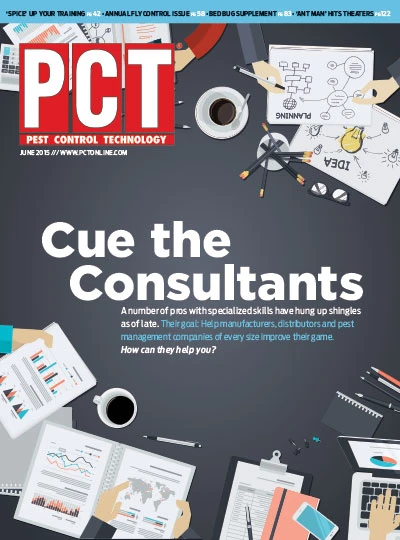 Bed bugs are not going away — and the more that we deal with them, the more we learn about their behavior. The majority of research conducted on bed bugs has been performed in residential, multi-family establishment settings, but little data exists on bed bugs in commercial environments. As bed bug issues continue to spread, the need to understand the behavior of this pest in facilities such as hotels, health-care facilities, schools and retail environments also will increase. While pest management operators seem to hear about bed bugs in some unique setting every day, the vertical that seemingly has the most concern and the highest number of issues is lodging.
Bed bugs are not going away — and the more that we deal with them, the more we learn about their behavior. The majority of research conducted on bed bugs has been performed in residential, multi-family establishment settings, but little data exists on bed bugs in commercial environments. As bed bug issues continue to spread, the need to understand the behavior of this pest in facilities such as hotels, health-care facilities, schools and retail environments also will increase. While pest management operators seem to hear about bed bugs in some unique setting every day, the vertical that seemingly has the most concern and the highest number of issues is lodging.
Commercial-only Research.
In the commercial pest management business, we have historically practiced under the assumption that activity in lodging areas would operate much like that in residential settings: newly introduced bed bug activity would be centered on sleeping or resting areas in the hotel room. The longer a bed bug infestation has been established, the further the issues would radiate out from those sleeping areas. That practice has been held up under anecdotal evidence and observations of pest management providers. However, there’s never been any data to substantiate those practices. At Steritech, we wanted to see if that theory would measure up to actuality. In 2014, we asked our operations team to enter specific details on where activity was identified during bed bug services.
 In an analysis of more than 9,000 bed bug services performed in hotel rooms across North America, the data backed up the practice. Steritech identified five key bed components as the primary bed bug activity location in 77.7 percent of services. Those five key areas included: the bed frame, mattress, box spring, headboard or footboard (in rooms where one is present). Box springs were the most commonly identified source in the bed components, at more than 25 percent.
In an analysis of more than 9,000 bed bug services performed in hotel rooms across North America, the data backed up the practice. Steritech identified five key bed components as the primary bed bug activity location in 77.7 percent of services. Those five key areas included: the bed frame, mattress, box spring, headboard or footboard (in rooms where one is present). Box springs were the most commonly identified source in the bed components, at more than 25 percent.
After beds, the most likely sources of activity were carpets and baseboard wall coverings, accounting for 9.2 percent; sofa beds and other furniture such as nightstands, dressers, chairs and TV stands made up an additional 6.1 percent.
This new data confirms the industry’s long-held belief and substantiates the need for a detailed inspection conducted by a PMP, as well as a targeted treatment plan to eliminate bed bug activity.
Don't Forget...
However, an inspection shouldn’t stop when activity is first found. The entire room needs to be assessed. Our data also shows that in about 86 percent of the rooms, activity was found in multiple areas. That means that if bed bug activity is found behind the headboard, it also could be present in other locations within the sleeping area, like the box spring. Although we don’t fully understand bed bug dispersion, any bed bug infestation can move from the bed to other areas of the room. A thorough inspection will confirm that activity is indeed isolated to one area or that a problem may be more widespread.
As pest management providers, we should consult closely with our lodging clients on treatment options, especially where the bed is concerned. Consumers have grown extremely sensitive to the use of pesticides in these areas, and awareness of pesticide treatments is continuing to heighten given recent incidents and media coverage. Other treatment options or alternative corrective actions might be a more appropriate course of action for the mattress and box spring, depending on the property.
The author is vice president, technical services, The Steritech Group, Charlotte, N.C.
WANT MORE?
Enter your email to receive our newsletters.

Explore the June 2015 Issue
Check out more from this issue and find your next story to read.
Latest from Pest Control Technology
- Birds In Buildings
- Third Hantavirus-Related Death Confirmed in California County
- Jonathan Richardson Shares Research Findings on Rodents and Zoonotic Diseases
- PPMA Emphasizes PMPs' Role in Tick Awareness Week
- PestSure Highlights Top Auto Crash Causes in National Distracted Driving Awareness Month
- Envu Introduces Botanical-Based Insecticide to Treat Mosquitoes
- Massey Services' Ed Dougherty Announces Retirement
- Cook's Pest Control Brandon Martin Uses First Responder Training to Save Customer's Life





